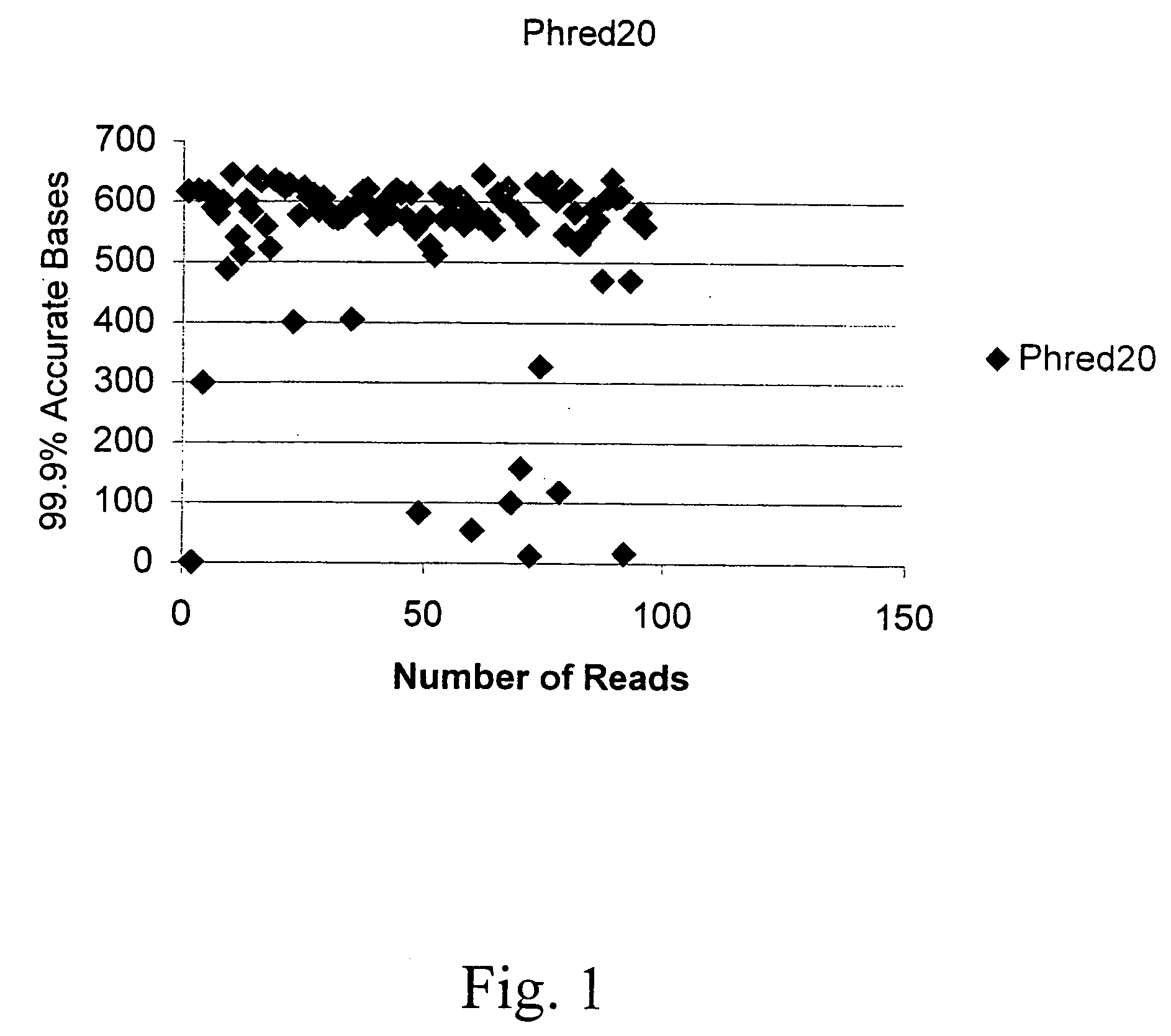Methods and reagents for the isolation of nucleic acids
a nucleic acid and reagent technology, applied in the field of methods and reagents for the isolation of nucleic acids, can solve the problems of limited throughput and achieve the effects of simplifying the purification procedure of nucleic acids, eliminating alkaline lysis, and simplifying the automation of the nucleic acid purification process
- Summary
- Abstract
- Description
- Claims
- Application Information
AI Technical Summary
Benefits of technology
Problems solved by technology
Method used
Image
Examples
example 1
[0112] The following procedure was used to purify plasmid DNA from a host bacteria. Bacteria were grown in 200 μl 2×YT with 50 μg / ml chloramphenicol in a 384 well Greiner growth plate for 18 hours at 400 rpm shaking (with an airpore seal to prevent evaporation). A 384 well pipettor was used to aspirate 20 μl of cells directly following growth from the 384 well Greiner growth plate (an uncentrifuged growth plate was used to ensure that cells were not impacted).
[0113] 20 μl of cells were dispensed to a well of a 384 well polystyrene plate. 85 μl of a first reagent was added to the well (the reagent included a lysis solution, a binding solution, and paramagnetic solid phase carriers). The final concentration of first reagent ingredients in the well were as follows: 3% polyethylene glycol 8000; 0.5 M NaCl; 0.2 N NaOH; 1% sodium dodecyl sulfate (SDS); and 0.0357% solids of COOH terminated paramagnetic particles. This solution simultaneously lyses the cells an...
example 2
Sequencing of Purified Plasmid DNA
[0117]FIG. 1 is a graph depicting the sequencing results of the plasmid purified in Example 1, as detected on a PE 3700 Capillary DNA sequencing with 1 / 16th dilution of the manufacturer's recommended Big Dye Sequencing reagent. The results attained with 1 / 16th dilution suggests the DNA is of high quality and suitable for sequencing.
example 3
Purification of Plasmid DNA Using a 96 Well Format
[0118] The following procedure can be used to purify plasmid DNA from host bacteria using a 96 well format. 50 μl of bacterial cell culture is dispensed into a well of a 96 well plate. 230 μl of a first reagent is added to the well (the reagent includes a lysis solution, a binding solution, and paramagnetic solid phase carriers). The mixture is optionally pipetted up and down three times. The final concentration of first reagent ingredients in the well are as follows: 3% polyethylene glycol 8000; 0.5 M NaCl; 0.2 N NaOH; 1% sodium dodecyl sulfate (SDS); and 0.0357% solids of COOH terminated paramagnetic particles.
[0119] The 96 well plate is placed on a magnetic plate for 8 minutes. Using a 96 pipettor, 200 μl of solution is aspirated at 2 μl / second, taking care not to disrupt the separated magnetic material. 200 μl is dispensed into a new 96 well plate.
[0120] Next, 80 μl of a second reagent is added to the well (the reagent include...
PUM
| Property | Measurement | Unit |
|---|---|---|
| pKa | aaaaa | aaaaa |
| mean diameter | aaaaa | aaaaa |
| diameter | aaaaa | aaaaa |
Abstract
Description
Claims
Application Information
 Login to View More
Login to View More - R&D
- Intellectual Property
- Life Sciences
- Materials
- Tech Scout
- Unparalleled Data Quality
- Higher Quality Content
- 60% Fewer Hallucinations
Browse by: Latest US Patents, China's latest patents, Technical Efficacy Thesaurus, Application Domain, Technology Topic, Popular Technical Reports.
© 2025 PatSnap. All rights reserved.Legal|Privacy policy|Modern Slavery Act Transparency Statement|Sitemap|About US| Contact US: help@patsnap.com


